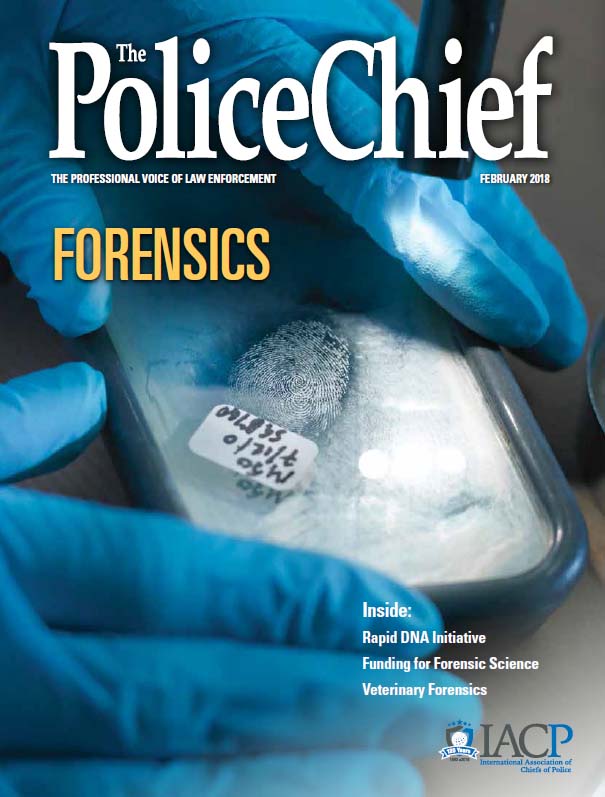
February 2018
Guest Editor: Stephanie Stoiloff
Forensic science dates back well over 200 years, when Scotland Yard first connected a bullet to the murder weapon (1835) and the first fingerprint classification system was developed (1892). The field has advanced significantly since then, and, when used effectively, forensic science—in all its many forms—can provide valuable contributions to law enforcement’s pursuits of justice and public safety.
Articles
-
Securing a Seat at the Table: How States Support Forensic Science Initiatives
Across the United States, state and local law enforcement agencies face increasing demands to prevent victimization and respond to crimes in their communities. Crime data on specific incidents, as c... -
U.S. Opioid and Fentanyl Case Occurrence in Crime Labs: A Survey
In August and September 2017, the American Society of Crime Laboratory Directors (ASCLD) requested information from crime laboratories across the United States regarding opioids in controlled substanc... -
The Role of Veterinary Forensics in Animal Cruelty Investigations
Veterinary forensics is a developing field that can assist with animal cruelty investigations. Animal abuse investigations are vital because animal maltreatment is a co-occurring and central aspect of... -
Addressing the Complexities of Digital Evidence
As noted in a 2014 Police Chief article, “Assessing the Impact of Digital Evidence on State and Local Policing,” the International Association of Chiefs of Police (IACP) has recognized ... -
Booking Station Hits: Arrestee Rapid DNA Analysis, Enrollment, and CODIS Hits
What if law enforcement could determine during booking if the arrestee being fingerprinted and photographed matched DNA evidence left 10 years ago at a murder scene hundreds of miles away in another s... -
Investigation of Typed Documents
The principle underlying the identification of typewriting rests on the improbability of two typewriters possessing, in a number of identical type characters, irregularities of an identical nature. Th...
Columns
- President’s Message: Solving Crimes in the Lab: Understanding the Role of Forensic Science in Policing
- Legislative Alert: IACP Second Vice President Testifies on the Long-term Care Needs of First Responders Injured in the Line of Duty
- Officer Safety Corner: Equine-Assisted Learning Resiliency Classes to Reduce PTSD and Stress
- Research in Brief: Identifying and Interacting with Victims of Sex Trafficking
- Chief’s Counsel: Denial of Medical Attention
- Product Feature: Body-Worn Cameras: Video Discussion Goes Beyond the Camera
- Technology Talk: The Evolution of the Law Enforcement Flashlight
- Traffic Safety Initiatives: Stopping “Silent Killers” with Traffic Enforcement
- IACP Working for You: Strengthening Law Enforcement’s Response to Domestic and Sexual Violence
- The Dispatch: February 2018
- Line of Duty Deaths: 12/12/2017–1/8/2018
- Product Update: February 2018
- Index to Advertisers: February 2018

